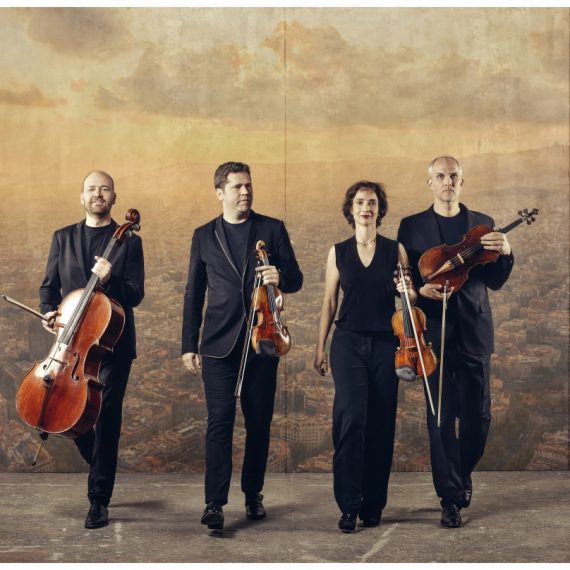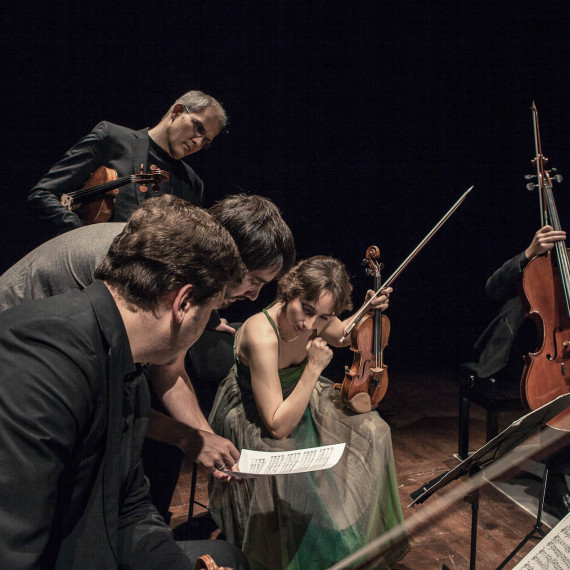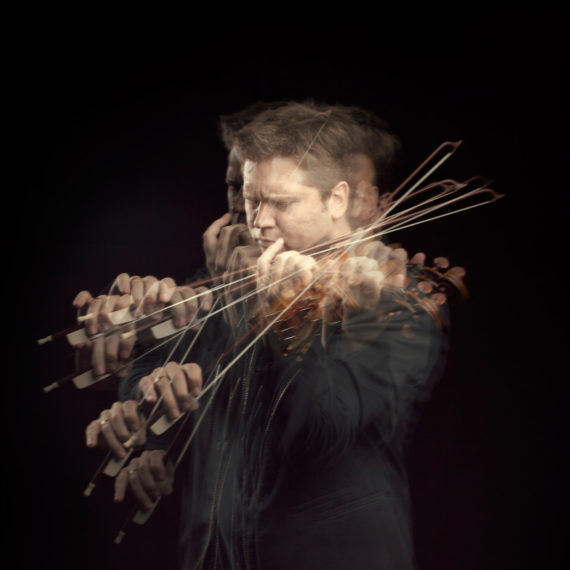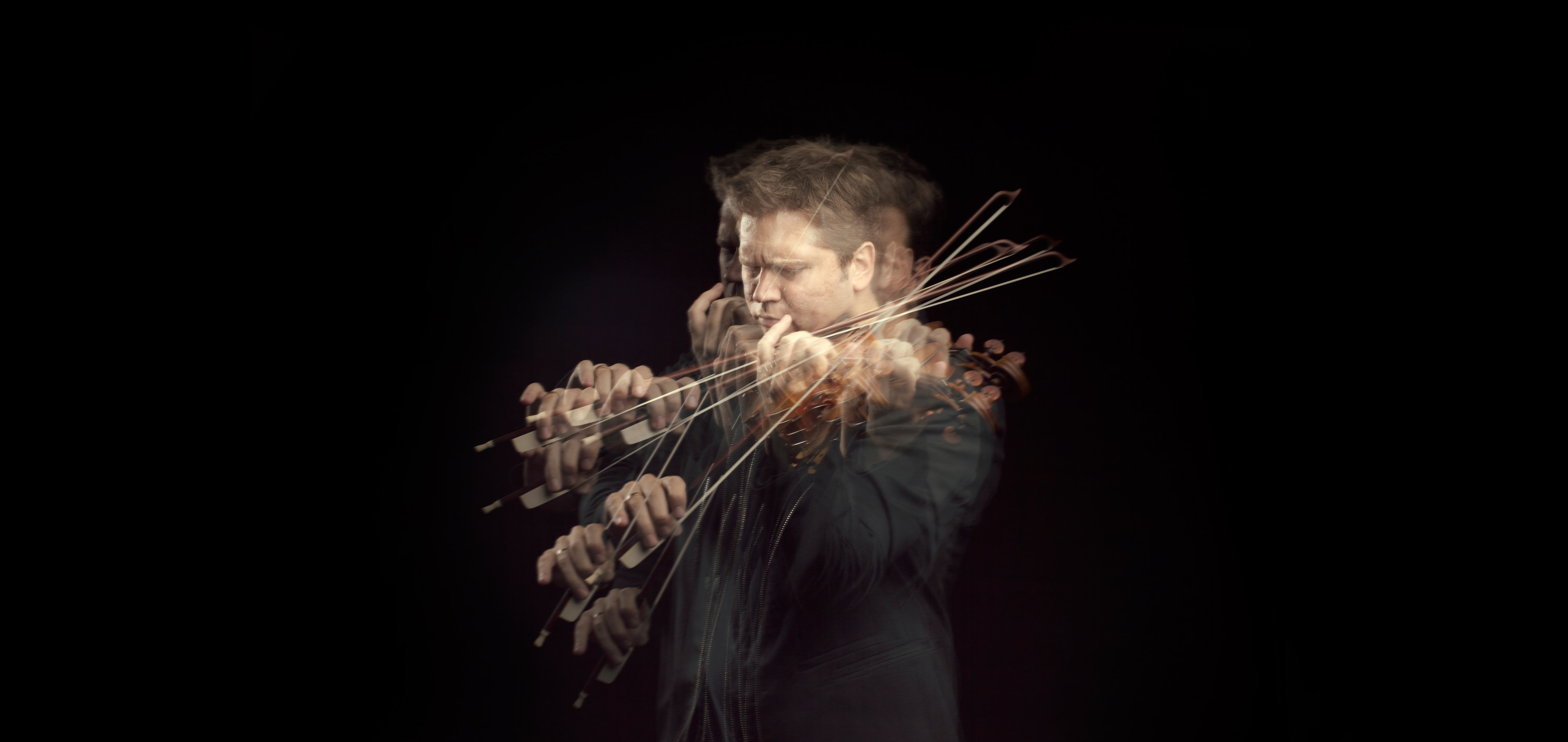
String Quartets # 2
Live in Barcelona
“This is a fine account up there with the best we have seen and heard.”
BBC MUSIC MAGAZINE
“Una gesta de la que hablarán futuras generaciones”
REVISTA SCHERZO
String Quartet n. 4, in C Major, D 46 |
1. |
Adagio - Allegro con moto |
06:44 | |||
2. |
Andante con moto |
04:36 | |||
3. |
Menuetto - Allegro |
04:41 | |||
4. |
Allegro |
05:55 |
String Quartet n. 1, in G minor / B flat Major, D 18 |
5. |
Andante - Presto Vivace |
05:38 | |||
6. |
Menuetto |
03:35 | |||
7. |
Andante |
03:37 | |||
8. |
Presto |
04:16 |
String Quartet n. 9, in G minor, D 173 |
9. |
Allegro con brio |
05:37 | |||
10. |
Andantino |
06:38 | |||
11. |
Menuetto |
03:37 | |||
12. |
Allegro |
08:03 |
CO-PRODUCED BY
BUY NOW
19,90€
Included formats
HD MOV (H.264) + LPCM 24bit 96kHz Surround 5.1. Size: 14GB
HD MOV (H.264) + LPCM 24bit 96kHz Stereo. Size: 9,9GB
HD MP4 · Stereo 320kbps 48kHz. Size: 3,2GB
Picture format
Color, HD 1080 25p 16:9
Duration
65 min.
Extra content
Digital Booklet (pdf)
14,00€
BY CUARTETO CASALS
Why, one might ask, would a Spanish string quartet make a live recording in Barcelona of the complete quartets of a long-dead Viennese composer for a label which insists upon working with living composers? What binds Cuarteto Casals, Franz Schubert and Neu Records together?
Outward perception and inward imagination: these hallmarks of Schubert’s style could serve equally well as the distillation of a string quartet’s ideals. We look above all inward: it is our very private and personal conversation that you, the listener, happen upon, a given concert only one more step in our individual and collective evolution. And at the same time the concerts documented here, performed in the hall we inaugurated and know best, depend on outside perception – on the audience in the hall or the listener alone at home. We have lived with these great works for well over a decade; indeed Cuarteto Casals was founded so as to be able to play ‘Death and the Maiden.’ What we present to you here is a snapshot of our experience with these masterpieces, hopefully bringing the unfamiliar listener into our collective imagination.
When we began performing the Schubert cycle (Barcelona was the last stop on a tour that included London, Schwarzenberg, Florence, Lisbon and Madrid, among other cities) a colleague asked why we agreed to this massive undertaking. Are the early Schubert quartets worthwhile in the way that the Opus 18 Beethoven quartets undeniably are? Of course the comparison is inherently unjust: at around the same age that Beethoven was publishing his first quartets, Schubert was writing his late masterpieces.
The unfair comparison notwithstanding, the early Schubert quartets are rich with so many of the characteristics with which we identify his mature style: daring harmonic turns, an elegant yet unpredictable sense of meter and phrasing and his assimilation of myriad styles from Ländler to overture, from fugal intricacies to folksong. That is to say, to discover the young Schubert is to find a treasure trove of materials, waiting to be moulded into their most perfect form.
Schubert remains a ‘modern’ composer even nearly 200 years after his death. The Schubert we experience in this great body of quartets, ‘wandering into far-off lands’ and ‘divided by love and pain’ has as much to say about our condition in the 21st Century as it did to his close circle of friends in Vienna. It was in this spirit that we set about making this live recording, in hopes that a listener beyond the limits of that hall on those nights would join us in discovering these great works anew.
Vera, Abel, Arnau and Jonathan
“Schubert is the best example to get a sense of where to put it. Just where to put it. It’s not a question of periods, the place is just the key, just where he places it is so fantastic with the atmosphere. Where he places it, is the atmosphere. Not too much, it just floats. It’s within our reach but it’s someplace no one else would put the melody in terms of registration. And it makes the difference, all the difference. There is a lot to learn in Schubert, just where he puts things. He is so effortless. (…) If I want to think about him as a genius, you don’t have to say anything about him; you just say Schubert, that’s enough.”
Morton Feldman
The Future of Local Music
By William Kinderman
Franz Schubert’s fascinating legacy of music for string quartet reflects two distinct stages in his creative development. While still a teenager, Schubert wrote numerous quartets, which display a resourceful treatment of compositional models. He gained valuable experience through playing viola in the family string quartet with his violinist brothers Ignaz and Ferdinand while his father played violoncello. Still more importantly, he played violin in the orchestra of the Vienna City Seminary (Kaiserlich-königliches Stadtkonvikt), and surely sometimes led the ensemble. Schubert originally composed fifteen quartets up to 1816 but some were lost or remained incomplete; the present comprehensive recording includes eleven of his early quartets. Later, during the last decade of his tragically short life, Schubert turned repeatedly to the genre of the string quartet for some of his most original and profound musical statements: the Quartettsatz in C minor (1820), and the last three quartets, in D minor (1824), A minor (1824), and G major (1826).
In 1824, Schubert looked back critically to his earlier quartets and even discouraged his brother Ferdinand from playing them, writing that “. . . it would be better, if you concentrate on other quartets than mine, for there is nothing to them.” Nevertheless, there is much of interest in these attractive compositions, and we best understand Schubert’s later detachment from them as a natural consequence of his self-conscious breakthrough to a new and original style of instrumental music during the 1820s.
The early string quartets display an affinity to orchestral styles and models. Indeed, the slow movement and finale of his Quartet in D Major, D. 74, themselves provided a springboard for the corresponding movements of Schubert’s First Symphony, D. 82, a piece in the same key completed just a month after the quartet. The compositional models for the early Schubert quartets include Mozart and Haydn, the opening movement of whose Symphony No. 78 in C minor influenced the finale of Schubert’s Quartet in C Major, D. 32. On the other hand, the first movement of Schubert’s Quartet in B-flat, D. 36, absorbs conspicuous references to the trumpet calls from Beethoven’s third Leonore Overture.
The String Quartet in E-flat major, D. 87, illustrates characteristic features of this earlier style. The opening movement begins with gentle statements of ascending stepwise motives rising from E-flat in the first violin, supported softly by the other instruments. An asymmetry of phrasing enriches the opening 14-measure statement, which is then repeated forte, with echoes and embellishments, before the music proceeds into a transition, with flowing figuration in the viola intensifying the textures. Distinctive rhythmic patterns connect the various themes to one another, while a conversational aura invests the music.
The quiet stepwise rising line from the outset of the first movement reappears in different guises in each of the ensuing movements. The humorous, ebullient scherzo places stress on the rising steps from E-flat to F and F to G, with these initial notes elongated and underscored through vigorous accented harmonies. The main melodic pitches are approached here by leaps from above, as crude donkey snorts replace the mysterious pianissimo quality from the beginning of the quartet. The thoughtful Adagio that follows reshapes the two-note motives from E-flat to F and F to G in accordance with its meditative character. In the Allegro finale, on the other hand, Schubert emphasizes the initial downbeat on E-flat in both the first violin and the cello, with the other instruments supplying swift figuration in the middle of the texture. The opening four-measure phrase of this final movement reshapes the initial three-measure phrase from the first movement, with its stepwise rising sixth from E-flat to C reincarnated in vivacious fashion, including insertion of a chromatic E natural as the second pitch of the rising line.
As this piece shows, Schubert’s earlier quartets should not be underestimated: they are rich in distinctive features and subtle touches. Nevertheless, Schubert’s later masterpieces assume an enhanced psychological depth, and sometimes convey a tragic perspective with a bleaker effect than that of Beethoven, with a deeper sense of resignation and a more enduring impression of loss. As in Schubert’s songs, this expressive quality is bound up with the artistic symbolism of the wanderer—the restless individual seeking elusive meaning in an open universe. Time and again, this implied protagonist experiences dream-like visions embodied in melodic episodes. In 1822, Schubert described this artistic strategy in his allegorical tale “Mein Traum” (“My Dream”), which places the composer himself in the role of such a wanderer. The personal journey is rooted in the experience of a duality of love and pain: “… and for the second time, I retraced my steps, and with a heart full of infinite love for those who scorned me, I wandered into far-off lands. I sang songs for many, many years. Whenever I wanted to sing of love, it turned to pain. And when I tried to sing of pain, it turned to love. So was I divided by love and pain.”
The importance of this experiential duality first becomes evident in Schubert’s Lieder. Among the earliest examples are the two famous songs to texts by Goethe from 1814–15: “Gretchen am Spinnrade” and “Erlkönig”. In the first there is a realistic, outwardly-orientated accompaniment, which evokes spinning but also points to Gretchen’s troubled mood. At the climax, the repetitious motoric motion of the accompaniment is interrupted and only hesitantly set into motion again. In “Erlkönig”, by contrast, the internal perspective, which is only subtly alluded to in “Gretchen am Spinnrade”, becomes the central dramatic aspect of the song. For Schubert, the seductive vision of the Erlking is the boy’s, not the father’s. The psychological depth of the setting is made possible by a sudden alteration of perspective in the music, whereby Schubert does justice to the visual dimension of the poem as well as the inner subjective experience of the boy. As harbinger of death, the Erlking addresses the boy with beautiful melodies; only here does the agitated character of the music yield to lyricism. The contrast between the inner perspective – the vision of the boy – and the turbulent outer perspective is intensified through unexpected modulations and sharp dissonances as an expression of the response of the frightened child.
Schubert gradually recognized how such strongly contrasting dramatic levels could be assimilated into his instrumental music. A key work in this regard is the Quartettsatz in C minor, D. 703, of 1820, the first of several fragmentary masterpieces of these years. The agitated darkness and chromaticism of the Quartettsatz are somewhat indebted to Beethoven and Mozart, but the execution is Schubertian through and through. The Quartettsatz begins with four imitative entries of an ominous theme full of chromaticism building with intensity to the emphatic dissonance in measure 9. A variation of the theme, which appears three bars later, leads to a contrasting lyrical subject in the submediant, A flat major, that is marked “dolce”. It develops as a twelve-measure section which is repeated and then extended. In this passage, the expected cadence leading to the repetition of the phrase is avoided (in bars 49, 53 and 59) before being asserted with a structural sforzato (view example).
The cadential close coincides with the sudden disappearance of the lyrical theme and the resumption of the minor tonality. It is marked by thematic material related to the opening of the movement. Schubert’s characteristic use here of a tri-thematic, three-key exposition, whereby the contrasting second theme commences and closes abruptly, is the outcome of an blending of dramatic and lyrical elements, an approach that evokes associations with the wanderer symbolism of his songs.
On 31 March 1824 Schubert reported to his friend the painter Leopold Kupelwieser that “With songs I’ve done little that is new, but I’m trying with instrumental pieces, for I’ve composed two quartets…” His impressive Quartet in A Minor, D. 804, had been premiered just two weeks earlier by Vienna’s leading professional quartet, the ensemble led by Ignaz Schuppanzigh, and this quartet remained the only major chamber composition that was published during Schubert’s lifetime. It bears a suggestive connection to his vocal works. The melancholy character of the figuration and melodic writing in the opening Allegro ma non troppo recalls “Gretchen am Spinnrade”, whereas the minuet immediately quotes motives drawn from Schubert’s song “Die Götter Griechenlands” (“The Gods of Greece”), a Schiller setting from 1819. The text in question is “Schöne Welt, wo bist du?” (“Beautiful world, where are you?”), a poignant expression of the quest of the wanderer figure with whom Schubert doubtless identified. Schiller’s poem continues that “Ach nur in dem Feenland der Lieder/Lebt noch deine fabelhafte Spur” (“Oh only in the fairy land of song/does your legendary trace remain”), another expression of that intense yearning that invests Schubert’s music. The nickname “Rosamunde” attached to this quartet derives from Schubert’s re-use in the Andante of a theme drawn from the incidental music for Rosamunde, D. 797, from 1823.
The second of the two quartets is the work in D minor, D. 810, whose Andante con moto is based on variations on the 1817 song “Der Tod und das Mädchen” (“Death and the Maiden”) to a poem by Matthias Claudius, D. 531. The song involves a dialogue between an anxious girl and the calm, implacable voice of death; the latter supplies the material for Schubert’s Andante con moto theme. Nevertheless, the human victim’s passionate presence haunts the expressive vocal inflections of the first violin in the first variation. At the center of this movement lies the expressive contrast between the powerful fortissimo variation (no. 3) -with its relentless diminution of the fateful long-short-short rhythmic pattern- and the ravishing beauty of the ensuing pianissimo variation in G major.
The fierce drama of the quartet’s beginning derives from Schubert’s insightful combination of two elements drawn from the song: the figure of repeated notes that accompanies the girl’s utterances, on the one hand, and the stepwise descending fifth which in the song conveys her final words but which in the quartet is transformed into the fortissimo opening gestures spanning D-G and A-D, on the other. This five-note repeated motive forcefully contradicts her poignant repeated plea to her adversary, “und rühre mich nicht an” (“and don’t touch me”), reminding us that the quartet’s expressive links to the song extend far beyond the slow movement variations. Another connection to death surfaces in the presto finale in 6/8 meter suggestive of a galloping horse, a macabre movement whose lyrical episodes in major keys suggest the coaxing, seductive promises of the Erl-king.
The massive Quartet in G Major, D. 887, from 1826, is one of the most audacious and exploratory of all his compositions. Here Schubert carves original thematic material out of the very bedrock of the tonal system. The opening crescendi on major triads seem to shatter these brighter sonorities into the minor, with broken accents following each explosion. Yet Schubert’s treatment of these concentrated gestures also spans vast distances in the overall musical form: at the recapitulation of this Allegro molto moderato, he inverts the modal progression to its opposite (minor shifting into major), profoundly transforming the expressive character. In its treatment of sonority, this movement is particularly resourceful, with uncanny tremolo figures and jarring dynamic contrasts. The sensuous lyrical episodes in the second subject area of the sonata form are repeatedly exposed to ambush by darker, turbulent music in minor keys. The last two movements are similarly rich in contrasts. The brilliant spectral scherzo is joined to a gentle Ländler dance as trio, which acts as an oasis of serenity. In the perpetual motion finale, the shadow of the minor lurks over the main theme in the form of an accented B flat in the first measure, and near the conclusion, a broad crescendo to triple fortissimo powerfully exploits the characteristic textures of repeated notes to assert G minor for the last time in the work.
Most pathbreaking, however, is the Andante un poco moto of this final Schubert quartet. This Andante assumes a slow processional character, with transparent sonorities and a wonderful narrative quality given to the cello. Yet the idyllic character is insecure and fragile, as if dependent on human subjectivity that is bound to be undone by the intrusion of the external world. The episodes in this movement are marked by dread, as agitated and even chaotic gestures intrude, with tremolo textures unmistakably reminiscent of the opening movement. Restless delirium is felt; a high, shrill outcry on G and B flat cannot be dispelled even when the tremolo harmonies below it shift in search of solid tonality. This unforgettable Andante, and the entire G major Quartet, remind us how Schubert’s art blends antithetical elements, exploring qualities of experience seen from a vantage point whose divided perspective encompasses both external perception and the inward imagination.
William Kinderman
“Director Igor Cortadellas succeeds in capturing momentary communications between the players (…) the presentation is neat, but what really distinguishes this release is the remarkably honed performance of the Casals Quartet. Its finely attuned ensemble playing seems effortless and stylish, revealing and characterful -as heard in the bubbling energy in the finale of D18, or in the charming Minuet of the same quartet, which opens with the beguiling charm of a music box. Add ravishing sound quality to the package, and you have a highly covetable release.”
THE STRAD / EDWARD BHESANIA
Interview with Vera Martínez Mehner, violin of Cuarteto Casals: (…) – En los dos volúmenes publicados hasta ahora se incluye el cuarteto más conocido de Schubert (el nº14) al lado de obras juveniles. En realidad, quitando los últimos cuatro (otras tantas obras maestras), el corpus de cuartetos de Schubert no es muy interpretado (salvo en integrales). ¿Qué lugar ocupan en el desarrollo del género durante el siglo XIX? Schubert compuso sus primeros cuartetos cuando era jovencísimo, pero progresó de forma increíble en muy poco tiempo, y es muy interesante seguir ese progreso. Por eso, me parece importante conocerlos todos para valorar su aportación al género. Porque sin duda hubo un antes y un después de los cuartetos de Schubert dentro de la literatura camerística. -Tocan a Schubert desde siempre, ¿cómo ha evolucionado su visión de esta música? En muchos sentidos. Aparte de cuestiones técnicas, siempre estamos ahondando en los aspectos interpretativos. Hemos incorporado por ejemplo los arcos barroco-clásicos para interpretar los cuartetos de juventud, lo que nos ayuda a acercarnos un poco más a su época. (…). Read more.
DIARIO DE SEVILLA / PABLO J. VAYÓN
“Magnífico DVD que nos aproxima a una música camerística de gran calidad. Esperamos nuevas entregas de este ciclo schubertiano interpretado por el Cuarteto Casals. (…) Cabe destacar en este concierto la excelente toma sonora, teniendo en cuenta que se trata de una grabación realizada en una sala llena de público. Magníficas resultan las imágenes captadas por siete cámaras fotográficas en modo video, cuyo montaje permite ver a los instrumentistas desde diferentes perspectivas, resaltando unos primeros planos donde puede apreciarse el gran nivel expresivo de cada uno de los intérpretes”
REVISTA MELÓMANO
“This is wonderful playing, and the performance of all three works gains a lot from being seen as well as heard. One always speculates -at least I do- about the dynamics, artistic and personal, of string quartet performers, but I have never felt that I have seen such a happy team as the Cuarteto Casals. Not only their glances and occasional smiles, but their whole body language suggest a harmonious group each member of which retains his or her personality. And the results are wonderful. Schubert’s early quartets are perhaps the most interesting of his early instrumental works, more adventurous than his early symphonies, more evidently shaped than his early piano sonatas. This pair, anyway, are, if not on the level of mature Schubert, well worth listening to in their own right. But it is, of course, the superb Death and the Maiden that one goes for, and this is a fine account up there with the best I have seen and heard. Without over-stressing anything, the Casals team immediately make clear the basic premise of the work: the fiercely dramatic and the passionately lyrical, proclaimed in the opening bars and maintained throughout the work, with the soothing melody of the title song giving way to the intensity of the slow movement, the straightforward aggression of the scherzo, and one of the most convincing of Schubert’s moto perpetuo finales, which abound in his later works. This is Schubert at his darkest, with only energy, boundless but indirected, to sustain him.” Michael Tanner. Performance: 5 Stars | Picture and sound: 5 Stars
BBC MUSIC MAGAZINE
“El nivel interpretativo de los Casals, que ya llevan 20 años de andadura juntos, es enorme, inmenso. El cuarteto ha alcanzado finalmente la excelencia. La grabación que, como corresponde, alcanza su cima en ‘La muerte y la doncella’, cautiva por la capacidad técnica de los intérpretes, por el estado de concentración de todos en todo momento, por la unidad de intención, la intensidad expresiva y la pertinencia de estilo. Más allá de la bondad de la interpretación, al fin y al cabo esperable, sorprende en esta primera entrega la calidad material y artística de la filmación, destacando la exquisita sensibilidad en la toma de sonido que equilibra el sonido de sala de una toma en directo en un concierto abarrotado de público, con la intimidad de una toma en estudio. También llama la atención la filmación, efectuada con 10 cámaras fotográficas en modo vídeo y el montaje final, pues destilan conocimiento de las obras y fina percepción del tipo de tempo visual que requerían unas piezas de estas características. La aparición del resto de los cuartetos a lo largo del presente año constituirá a buen seguro uno de los acontecimientos de la temporada.” Read more
BABELIA. EL PAÍS
“Era de esperar que el Casals volviese antes o después a los cuartetos de Schubert, a los que sientan de fábula su elegancia en el fraseo, su igualdad en el sonido y su consumado dominio del estilo. Pero grabar todos ellos en directo desde el Auditori de Barcelona, con la presión de las cámaras, los micros y el público acechando constantemente, es una proeza al alcance sólo de los mejores y los más valientes. Y que el Casals es uno de ellos lo demuestra con creces esta primera entrega que incluye, como obra principal, esa pieza maestra que es el D. 810, “La muerte y la doncella”, en una lectura arrebatada y tensa que, sin cargar excesivamente las tintas, se pliega al lirismo y la introspección en su movimiento lento. Cuando hay bienestar y complicidad, además de mucho talento, la música fluye con total naturalidad, sin bloqueos, a toda luz. Pero además de ese soberbio D. 810 el Casals aborda dos cuartetos que puede parecer fácil calificar de menores, aunque la grabación niega completamente la mayor: nada en Schubert merece ese calificativo, tampoco ese D. 68 que es clave en la definición de su estilo como compositor o ese D. 94 cuyo Presto desprende una contagiosa alegría de vivir. Acaso haga falta ver y escuchar en ambos al Casals para comprender su grandeza oculta. La magnífica filmación de Igor Cortadellas se ofrece en Blu-ray, DVD y formato digital de Vídeo HD, y la presentación de Neu Records es tan buena como cabía esperar, con estupendos comentarios de William Kinderman disponibles únicamente (único lunar de la edición) en inglés. Y por supuesto, el público del Auditori responde con el entusiasmo de quien asiste a una gesta de la que hablarán futuras generaciones. Una vez más, y ya son muchas, el Casals ha dado en el centro de la diana.”
REVISTA SCHERZO
“El resultat és un producte de cuidat disseny que ens permet veure el Quartet Casals com mai no ho haviem fet abans: plans curts que ens revelen on dirigeixen les seves mirades, com treballen amb els seus arcs (…) L’estètica visual concorda amb la proposta sonora, la qual aconsegueix un so pulcre i fidel al directe, sense perdre l’energia del moment: l’entorn s’elimina en un fons negre i tota l’atenció queda fixada en els músics (…) Un petit tresor. Imprescindible.”
REVISTA MUSICAL CATALANA
“El Cuarteto Casals está acostumbrado a romper moldes. (…) La primera grabación en directo de los 15 cuartetos de cuerda de Franz Schubert en alta definición, en una colección de cinco DVD/Blu-ray de una calidad de vídeo y sonido excepcional.” Read more
EL PAÍS
“L’esdeveniment musical va més enllà de la qualitat sonora i la definició de vídeo (…) En realitat, la inversió es tradueix en aquest intangible que és la calidesa i la profunditat indispensable per recrear l’energia única que es genera en un concert.”
LA VANGUARDIA
“Las interpretaciones extraen de aquellos sus notables cualidades, entendiendo con gran dramatismo y fuerte tensión el D 810. Son logros de primera magnitud, comparables a lo mejor que conocemos. Una publicación, pues, ejemplar, a seguir.” Read more
REVISTA RITMO
“Una interpretació brillant” Read more
SONOGRAMA MAGAZINE
“La interpretació és plena de lluminositat, amb un so tan compacte com ric i tan subtil com poètic.”
REVISTA SEGARRA
Composer
Performers
Vera Martínez Mehner and Abel Tomás Realp, violins
Jonathan Brown, viola
Arnau Tomás Realp, cello
Co-produced by
Camera operators
Marc Campà, Igor Cortadellas,
Raül Esteve, Marta Mans,
Ferran Pérez, Dani Sierra
Digital video post-production and color
Marc Campà, Igor Cortadellas
Lights
Juanjo García
Makeup
Eva Fernandez Suller
Sound assistance
Alejandro Parra
Recorded at
L’Auditori, Sala Oriol Martorell
Barcelona, Spain
5th of November, 2013
Video director
Igor Cortadellas
Music production and sound
Santi Barguñó, Hugo Romano Guimarães
Concert programming
Robert Brufau
Concert producer
Violeta Amargant
Neu Records executive producer
Booklet liner notes
William Kinderman
Design
Photos
Igor Cortadellas


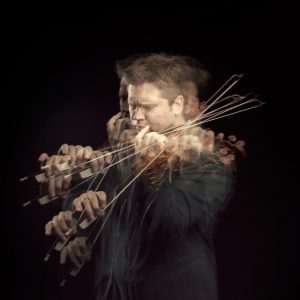 Cuarteto Casals: Schubert # 2
Cuarteto Casals: Schubert # 2
